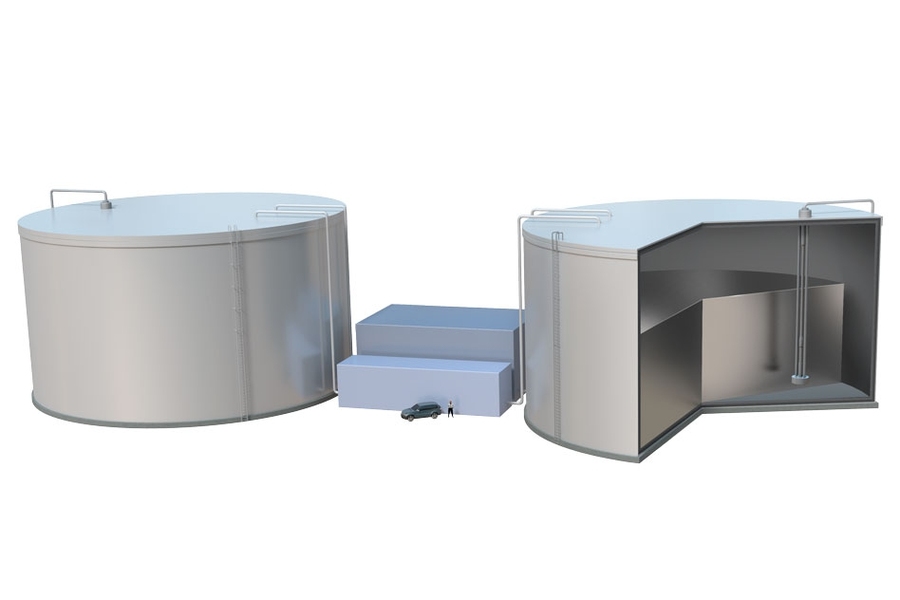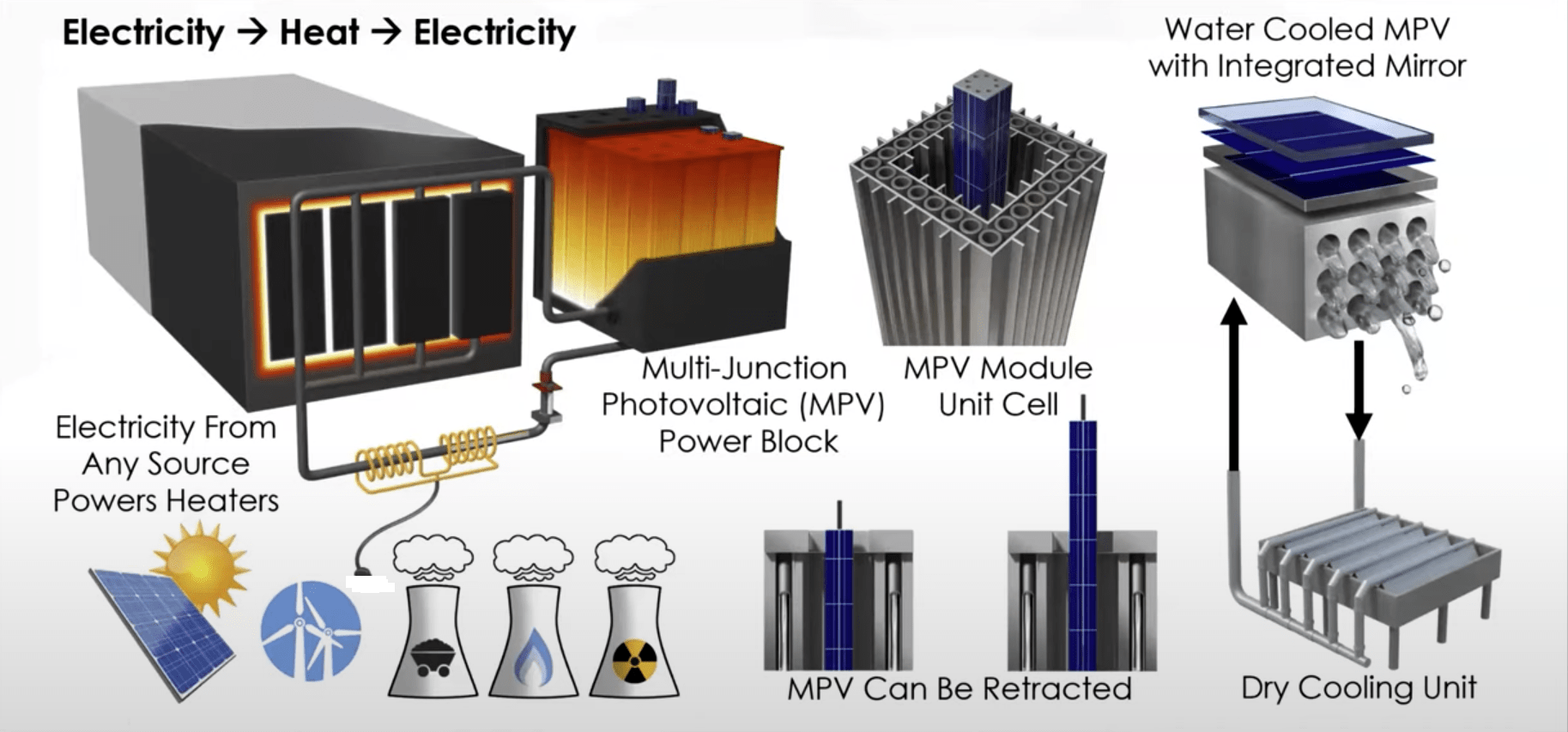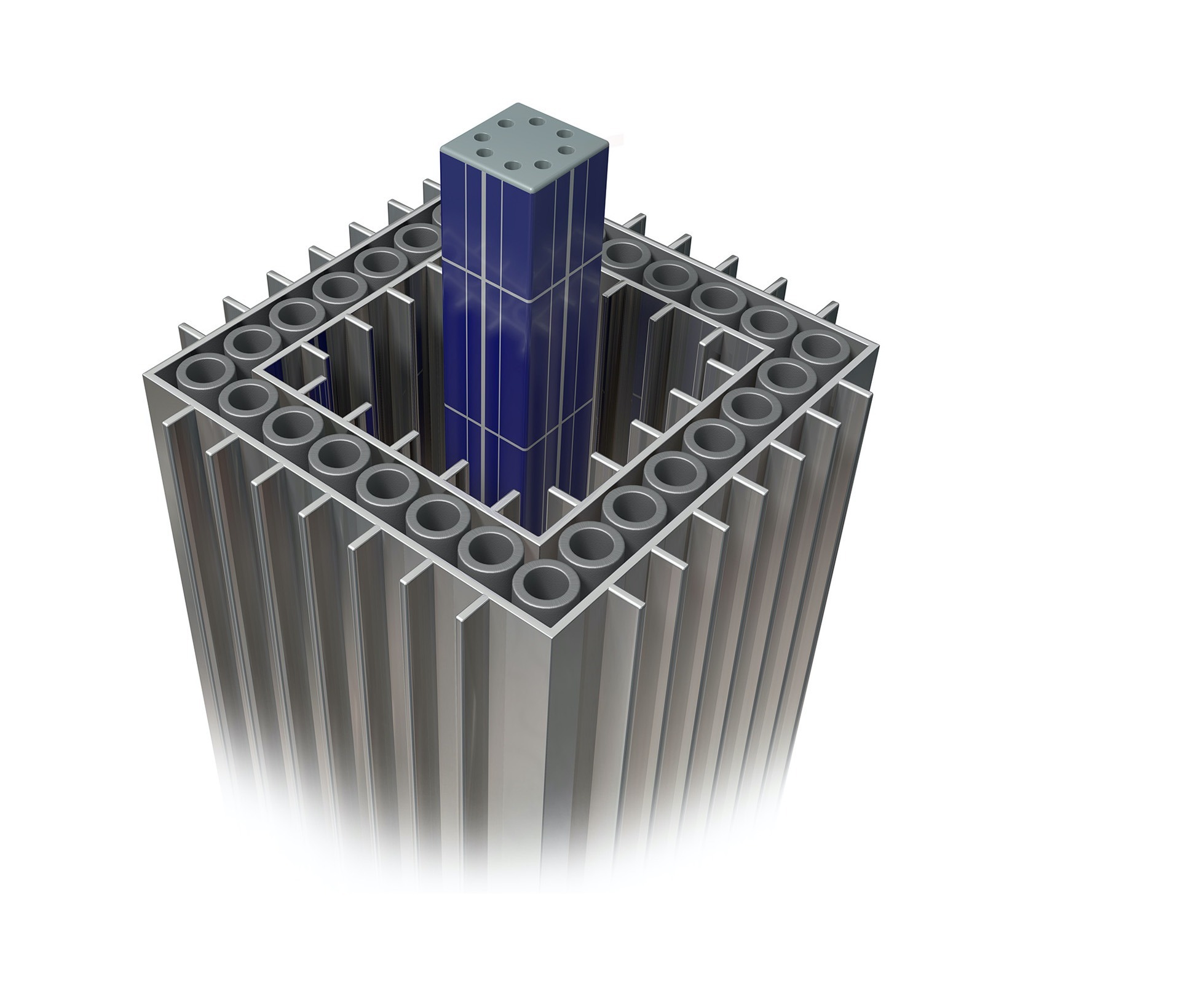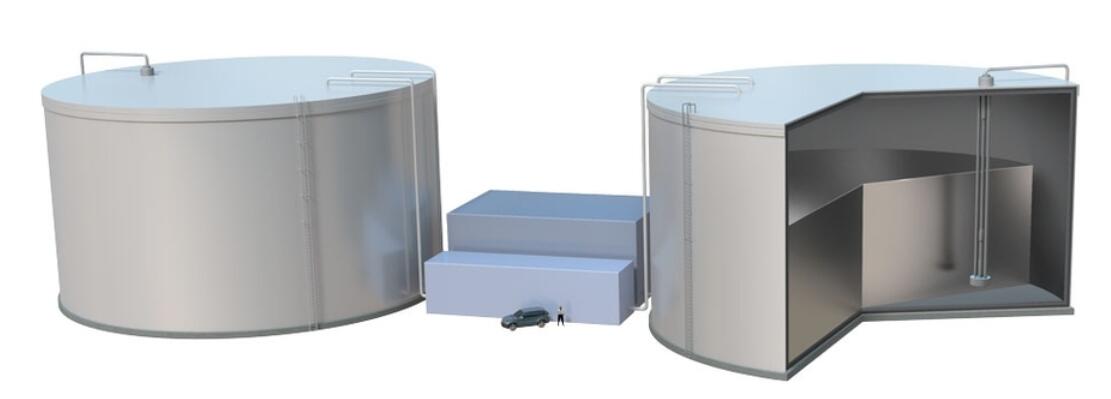Pumping hot molten silicon is the key to gigawatt-scale thermal storage.
“This is the technological step that we made that preceded this,” said Henry. At this scale, you would need to able to pump a very large volume of very hot silicon through the enormous network of carbon graphite pipes. Pumping was the breakthrough that enabled the technology. The team hold a Guinness Book record for pumping silicon at 1,400°C, and recently surpassed it by pumping molten silicon at about 2,000°C.

To pump the molten silicon, a mechanical pump centered within each of the two gigantic vats about 40 m tall moves the liquid throughout the system. IMAGE@Caleb Amy
In their 2017 paper published at Nature: Pumping liquid metal at high temperatures up to 1,673 kelvin they showed actual moving parts glowing white hot and not shattering. The team tested pumping liquid tin at 1,400°C using a mechanical pump, proving that the materials can work under these conditions. The seals to join two graphite pipes so liquid metal does not leak are crucial.
“How we do that is we can actually make all ceramic or all graphite pumps and valves and piping networks,” Henry said. “The key innovation here is in the seals. Graphite is actually not a very expensive material to work with. It’s easy to machine. We do it in my lab all the time. The cost is not much more expensive than steel and you can make it make a whole graphite system very easily.”

The components showing the details of the MPV power block IMAGE@Caleb Amy
From the return tank, after its heat is extracted, silicon is pumped through a central big box of electric heating elements to bring electricity in from the grid to heat the liquid, which is then pumped into the hot tank, ready to be pumped through the box of pipes where solar cells discharge the electricity to the grid, and return the silicon to the colder tank to start again.

One of the multiple MPV units IMAGE@Caleb Amy
In each MPV unit, a central four-sided “tower” of MPV is surrounded by a square of white-hot walls radiating light, because molten silicon at 2,400°C is being continuously pumped through the pipes heating tungsten walls facing into the central tower. Each MPV unit can produce half a MW of electricity, and these would be duplicated multiple times inside a large container about 10 meters tall, for massive storage at grid scale.
Some of the radiation cannot be converted efficiently, so the wavelengths of infrared light that are below the band gap, pass through the multi-junction cell, and are reflected off the mirror behind it, after which they bounce back to the courtyard walls, rejecting heat. In addition they are also water cooled.
How the MPV enables thermal storage discharge as fast as a battery
This solar heat engine would allow instantaneous response to grid needs, because each unit inside the thermal storage could be turned on or off instantaneously.
“These MPV cells could be actuated in and out of the light,” said Henry. “They could be mounted to actuators so you can dip them into the light source to turn the system on to get output, or retract them to very quickly reduce the output. This is why this is very attractive – for grid scale storage, this allows you to have gigawatt scale ramping on the order of seconds, which currently doesn’t exist.”
As a result, this MIT concept would have a fast response advantage over today’s peaking turbines which take 20 minutes or more to ramp from zero to full load. Henry added that battery cost-reduction has inherent limits because chemicals require high purity to react, while thermal energy storage doesn’t. “This is because when you store energy thermally, at the atomic level, you are actually storing it as kinetic energy,” he explained. “When you heat something, the atoms move faster. And kinetic energy is very tolerant of impurities. So you can use much cheaper materials for thermal energy storage.”
He suspects batteries are unlikely to ever get below $50 per kWh for this reason. But to get to 100% renewables, energy storage costs must get down to under $10 per kWh.
“The reason we’re designing this is that there isn’t a cheap form of energy storage for long durations,” Amy noted. “Most of the economics we’ve looked at are for just like ten hours, right? We’re looking at up to a hundred hours. We think it looks pretty good in that regime. Definitely it has a cheaper heat engine cost because everyone else is using a mechanical turbine.”

“This is why this is very attractive – for grid scale storage, this allows you to have gigawatt scale ramping on the order of seconds, which currently doesn’t exist’” IMAGE@Caleb Amy
(By:


